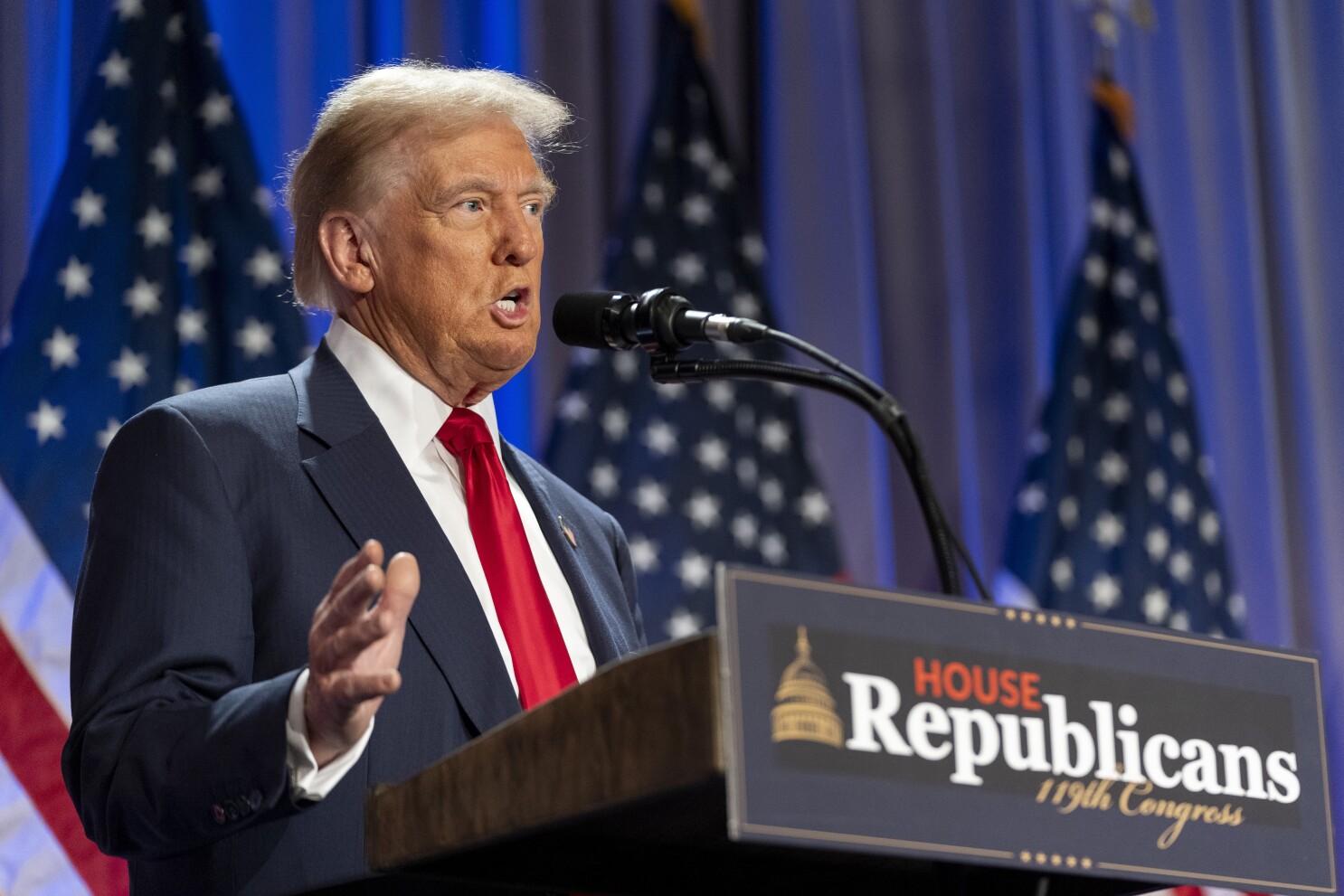What to know about Trump’s objectives for tariffs
Tue, 14 Jan 2025 13:00:00 | Print | Email Share:
Many economists said there would seem to be four main objectives for tariffs in the world of Trump and his advisors.
 We’ve already seen Trump threaten 25% tariffs on Canada and Mexico if the pair do not tighten border security to stop the flow of illegal migrants and drugs into the US.
We’ve already seen Trump threaten 25% tariffs on Canada and Mexico if the pair do not tighten border security to stop the flow of illegal migrants and drugs into the US.
Can there really be such a thing as good tariffs? Economists are pretty united in their view that tariffs are bad. Last week, we saw that Federal Reserve staff attempts to plug Trump’s tariff-wielding policies into their models produced lower growth, higher unemployment, and higher inflation. Private sector projections paint the same picture. But while tariffs are generally bad, there might be some good elements, and hopefully it will be the good tariffs that Trump focuses on, not the bad ones.
There seem to be four main objectives for tariffs in the world of Trump and his advisors. One is to put pressure on other countries or industries to cede concessions to the US. The second is to generate significant income via the tariff revenue. The third is to make US firms re-shore production back to the US. And the last is to improve the trade balance.
In the Standard Bank’s view, only the first of these might contain some elements of what might be called ‘good’ tariffs. For if the US, or any other country for that matter, finds that its domestic industries are unfairly impacted by foreign competition, through excessive government subsidies to local firms, for instance, then tariffs might be a valid way to try to end this distortion if other routes, through the World Trade Organisation ((WTO),for example, have been tried and failed.
The other justifications for tariffs are poor in the Standard Bank’s view, as tariffs don’t generate significant income for the US government, don’t lead to re-shoring, or, if they do so, are likely to do so at a higher cost. There is also very little evidence to suggest that tariffs improve the trade balance, as Trump’s dalliance with tariffs in his first term showed. We’d argue that these three ‘bad’ tariffs are associated with the idea of a global 10-20% tariff that Trump talked about before the election. Why is this?
On the first, significant revenue generation, it stands to reason that you can only hope to receive significant tax income from tariffs if you tariff a huge range of imports (such as all of them) and at a punitive rate.
The second, re-shoring production back to the US, would also seem to require global tariffs, as US firms faced with increased costs because of tariffs on China, for instance, might opt to produce somewhere else, such as another Asian country that is not subject to tariffs, rather than move to bring production back to the US.
And on the last, improving the trade balance, there’s a very similar argument here that US firms that get supplies from a newly tariffed country can simply switch their supplier to another foreign country that is not the subject of tariffs. One final point is that the vast bulk of the adverse economic impact on the US from tariffs, such as weaker growth and higher inflation, will likely come in the case of global tariffs, not if tariffs are used as a threat in what we’ve described as potentially a ‘good’ way. This is not just because of the scale effect from relatively modest single-country tariffs compared to much more destructive global tariffs, but also because these tariffs may never be levied in the first place.
For instance, we’ve already seen Trump threaten 25% tariffs on Canada and Mexico if the pair do not tighten border security to stop the flow of illegal migrants and drugs into the US. These threats immediately secured new measures from both governments. Now, whether this proves sufficient to forestall US tariffs is an open question. But we’d hazard a guess that if Trump’s tariff policy is couched in terms of these sort of bullying tactics, rather than levying a 10-20% tariff on all countries without any prior threat, then not all the tariffs will be imposed and financial markets—and foreign governments—will be able to breathe a sigh of relief.
However, what are the chances that Trump will opt for the scare tactics approach of tariffs on selected countries and/or industries rather than the all-out global tariff assault he talked about during the election campaign? The answer will be crucial, as many economists suspect that financial markets will be able to cope (and perhaps even rally) if it is the first, but sink if it is the second. They suspect it will be the first, although that might be a forecast made more out of hope than expectation.
By: NGOC ANH/ Business Forum Magazine
Source: https://en.diendandoanhnghiep.vn/what-to-know-about-trump-s-objectives-fornbsp-tariffs-n41921.html
---------------------------------------------
Same category News :













